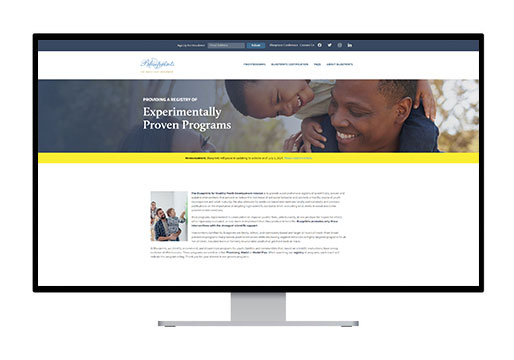Bottom Line provides individualized college advising to high school students starting at the end of their junior year. Eligibility criteria for the program includes: 1) a high school GPA of at least 2.3; 2) family income below 200 percent of the poverty line; and 3) being in the first generation in their family to go to college in the United States. Students are initially admitted into the "Access" program, which provides students with college and financial aid application support starting the summer before their senior year in high school through the summer after high school graduation. During this time, advisors help students identify well-matched colleges and then complete and submit college applications. The Bottom Line "Access" program also helps students evaluate the affordability of different postsecondary options, and then advisors actually help students apply for financial aid. Barr & Castleman (2017) reported that Bottom Line operates in several cities in 3 states (Massachusetts, New York, and Illinois As reported in Barr & Castleman (2017), a unique component of the program is that counselors encourage students to attend a set of target colleges and universities within New York and Massachusetts that the program has identified as providing students with an optimal combination of quality and affordability. Students who enroll at one of the target institutions (approximately 50 percent of the students in Barr & Castleman, 2017) are eligible for the Bottom Line "Success" program, in which individualized and campus-based support is provided for up to six years following high school.
Clearinghouse and Evidence Level
Blue Prints
The Blueprints for Healthy Youth Development mission is to provide a comprehensive registry of scientifically proven and scalable interventions that prevent or reduce the likelihood of antisocial behavior and promote a healthy course of youth development and adult maturity. We also advocate for evidence-based interventions locally and nationally and produce publications on the importance of adopting high-scientific standards when evaluating what works in social and crime prevention interventions.
Level 1
Strong evidence from at least one well-designed and well-implemented experimental study.
Quick Stats
Content Focus Area
College and Career Readiness
Grade Band
High School
Number of studies
1
Intervention Information
The information below provides details and characteristics of the intervention. The presented information is sourced from another clearinghouse. To learn more about the intervention, click through to the Source clearinghouse.
This page displays information on the population and settings in which studies were conducted on the intervention’s effectiveness. This means that the intervention has some level of positive evidence in the listed student populations and context. Remember to take your school’s context and population into consideration when selecting an intervention. Read more on selecting interventions.
| Resource Type | Program Evaluation | This presents the grade level of students represented in the reviewed studies for this intervention. On the OEBC, grade bands are categorized into four levels: Early Childhood (Birth-Age 5), Elementary School (Grades K-5), Middle School (Grades 6-8), and High School (Grades 9-12). |
|---|---|---|
| Subject Area | Not Listed | This refers to the school subjects: English Language Arts, Math, Science, and Social Studies. An intervention will be tagged with a subject if a reviewed study by the source clearinghouse has found that the intervention led to positive results in learning in that subject. |
| Setting | Urban | This presents the setting represented in the reviewed studies for this intervention. On the OEBC, setting has three categories: Rural, Urban, and Suburban. |
| Demographic |
| Demographic information refers to the student’s race/ethnicity and gender. It also includes information on subpopulations (e.g. Students with Disabilities, English Learners, Economically Disadvantaged, Justice Involved, and Foster Care). On the OEBC, an intervention is only tagged with demographic information if that intervention is specifically designed for, and has been reviewed on, that demographic. Please click through to the source clearinghouse to find total demographic breakdowns of all students who have taken part in a study on the intervention. |
| Training Needed | Listed | This indicates if the source clearinghouse has information on training needed to implement the intervention. | Length of Program or Delivery | Listed | This indicates if the source clearinghouse has information on how long the intervention takes to implement (e.g. session delivery time and/or how many days or weeks it takes to implement). |
| Cost | Not Listed | This indicates if the source clearinghouse has information on the cost to implement the intervention. |
| Effect Size | Not Listed | This indicates if the source clearinghouse provides an effect size for the intervention. Please visit the source clearinghouse to find the effect size and read more about the studies on this intervention. |
Studies Cited
- Barr, A. C., & Castleman, B. L. (2021). The Bottom Line on College Advising: Large increases in degree attainment (EdWorkingPaper 21-481). Retrieved from Annenberg Institute at Brown University: https://doi.org/10.26300/xdsa-5e22.

